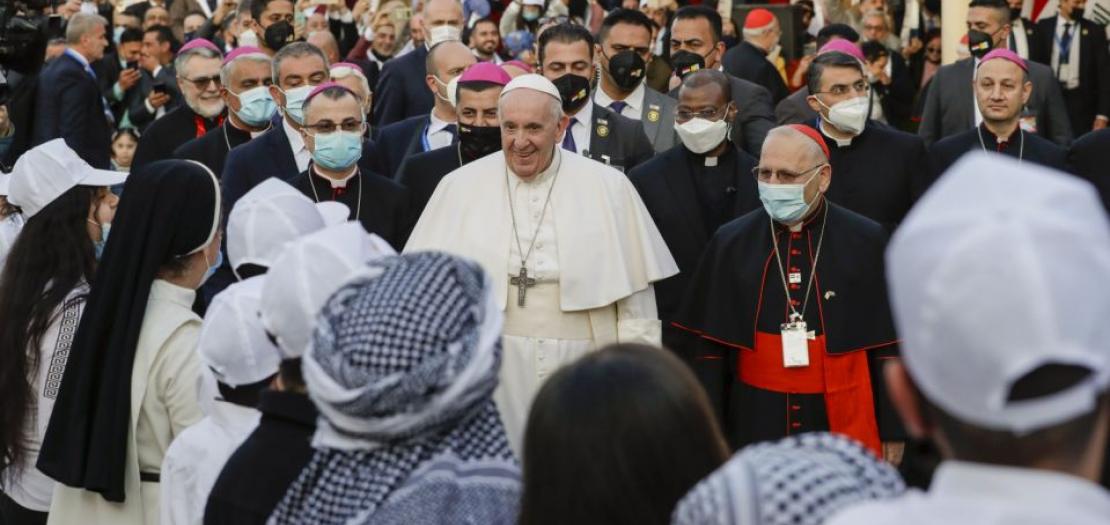Issued by the Catholic Center for Studies and Media - Jordan. Editor-in-chief Fr. Rif'at Bader - موقع أبونا abouna.org
Pope Francis’ visit to Iraq has five dimensions
The four-day visit of Pope Francis to fraternal Iraq is characterized by several dimensions. The first one implies consolidating diplomatic relations between the Iraqi state and the state of the "Holy See", which is the name used in international forums that refers to the state of the "Vatican". There have been lucid meetings that expressed the extent of the Iraqi authorities’ appreciation for the approach adopted by Pope Francis, especially with reference to his calls to uphold and defend human dignity as well as the dignity of the poor, the needy, the homeless, and the refugees.
The second dimension implies promoting the Christian faith among the Christian communities currently present in Iraq. We are fully aware that fraternal Iraq has been subjected to successive wars, to in-fighting, and to terrorist groups that have tried to change the mosaic and religious pluralism in fraternal Iraq. This situation caused innumerable miseries to the Christians particularly in the wake of the attacks undertaken by the so-called ISIS on Mosul, and on other cities and villages where they were forcibly to vacate their areas in toto. Pope Francis came to pray with the steadfast Christians in Baghdad, as well as with the Christians returning to Mosul and Qaraqosh. How impressive were the words of encouragement and love expressed by the Pope who represents the head of the Catholic Church, and who comes to Iraq with no economic or political interests in mind. His visit is entirely intended to encourage the Christians in Iraq to remain steadfast.
The third dimension of the visit is the cooperative relations between religions. During the visit, two things of great importance took place, namely the meeting of His Holiness Pope Francis with scholar Ali Sistani who has moral influence on millions of people. The second thing is the historic meeting in the Chaldean city of Ur, the Nassiriya Governorate in southern Iraq, where Pope Francis stood under one tent with the representatives of the recognized religions in Iraq and who have a rich role in Iraqi history. Of course we are referring to the two main branches of Islam, namely Sunni and Shiite, as well as Christianity. There were also representatives of the religions that had existed in Iraq ages ago such as the Sabean, Mandaean, Shabak, Yazidi and Kaka.
The fourth dimension refers to the relations among Churches. Pope Francis met with representatives of various Catholic and non-Catholic Churches. We realize that Iraq has church mosaics including Eastern and Assyrian Churches which have numerous followers. Pope Francis said that the martyrs who are affiliated with the various churches are our martyrs who shine together like stars in the same sky. This talk indicates what he always reiterates, namely ecumenism (the unity of the Church in blood), because the unity of blood and martyrdom qualifies Iraqis nowadays, especially those affiliated with Churches, to be united.
The fifth dimension is the call for attaining peace and tranquility. Pope Francis focused on the role played by Iraq, and urged on a Twitter posting not to forget the dear neighbor, Syria, and to address the central issue in the East, namely the Palestinian question.







